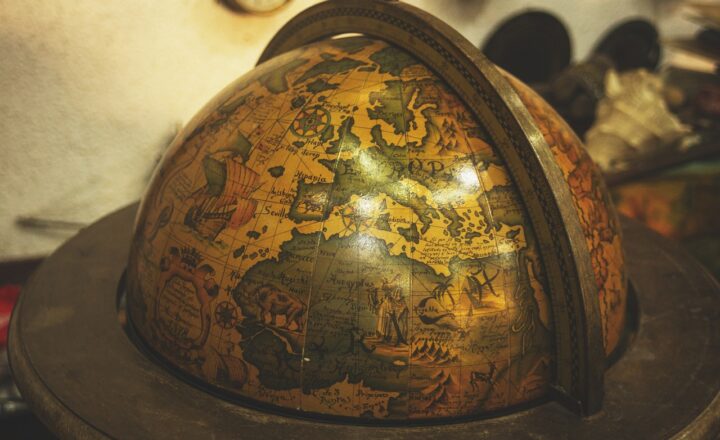
Glass has been an integral part of human civilization for thousands of years, serving not only as a practical material but also as a canvas for artistic expression. From its early beginnings to its current status modern society, glass has played a significant role in various aspects of life, culture, and industry. In this article, we will explore the fascinating history of glassmaking and uncover how this remarkable material has revolutionized civilization.
1. The Origins of Glassmaking
The history of glassmaking dates back to around 3500 BCE in the regions of Mesopotamia and Egypt. Early glazes were discovered accidently while artisans were experimenting with different materials in their kilns. The first glass-making techniques involved heating quartz sand, along with the addition of alkaline substances such as natron, to create a viscous liquid that would cool to form solid glass.
The earliest glass objects, often used for beads and small ornaments, were notably simple. However, as the techniques evolved, the production of glass vessels and containers began around 1500 BCE. The Romans, in particular, played a vital role in advancing glassmaking techniques around 100 CE, developing the process of blowing glass, which allowed for the creation of more complex shapes and designs.
2. The Art of Glassblowing
The invention of glassblowing revolutionized the glassmaking industry. It provided artisans the ability to produce beautiful and intricate glass items with greater efficiency. The process involves gathering molten glass on the end of a blowpipe and inflating it into various shapes and forms.
This opening up of new possibilities in glass design had a profound impact on both decorative art and functionality. During the Roman Empire, glassblowing techniques were refined, allowing for the mass production of glass articles for everyday use. Glass vessels became symbols of luxury and wealth, often adorned with intricate designs and vibrant colors, making them prized possessions in Roman households.
3. The Spread of Glassmaking Techniques
By the Middle Ages, glassmaking had spread throughout Europe, notably in areas such as Venice, where skilled artisans developed their unique styles. Venetian glassmakers mastered the art of creating glass beads, mirrors, and crystal chandeliers. Not only did they produce popular items, but they also set the stage for future innovations in glass designs.
The reputation of Venetian glass led to the establishment of the island of Murano as the center of glass production. Glassmakers were encouraged to relocate there to prevent fires in the city of Venice, and strict regulations were put in place to protect trade secrets. Over time, Murano glass became synonymous with high-quality craftsmanship and artistic expression.
4. Glass in Science and Technology
Beyond its aesthetic appeal, glass has been pivotal in scientific advancement. The invention of the microscope in the late 16th century and telescopes in the 17th century depended heavily on high-quality glass for lenses. These instruments allowed scientists to explore previously unseen dimensions of the natural world, thereby revolutionizing fields like biology and astronomy.
The development of laboratory glassware during the 19th century, including beakers and flasks, further cemented glass’s role in scientific inquiry. These advancements combined practicality and precision, enabling chemists to conduct experiments with increased accuracy and consistency.
5. Modern Innovations in Glassmaking
As industrialization took hold in the 19th and 20th centuries, glassmaking began to shift towards mass production, utilizing advanced machinery and methods. Innovations like float glass production and tempered glass technology changed building design and safety standards.
With the rise of technology, glass has found new applications in processed materials like fiber optics and solar panels. These developments have opened up new opportunities for communication, energy, and even medicine, making glass one of the most versatile materials in modern life.
6. The Cultural Significance of Glass
Throughout history, glass has transcended mere functionality—it has been a symbol of culture, status, and craftsmanship. Various civilizations have used glass to communicate religious beliefs through stained glass in cathedrals or to showcase art and talent through glass sculptures.
The appreciation of glass art can be seen in contemporary times with glass exhibitions and museums dedicated to showcasing the beauty and versatility of the material. Artists around the world continue to push the boundaries of glass, experimenting with form, color, and technique to create breathtaking installations and pieces.
7. Conclusion: Glassmaking’s Lasting Impact
The journey of glassmaking, from ancient origins to contemporary technological innovations, highlights its critical role in shaping human civilization. This versatile material not only transformed industries but also enriched culture and art throughout history.
As we move forward, glass will undoubtedly continue to influence our lives, embodying the connection between aesthetic and functionality. By further embracing innovative glass applications, we can look forward to a future where glass continues to be as essential as it has always been.
In exploring the history of glassmaking, we remind ourselves of the profound impact of this material on civilization and its potential to drive future advancements, ensuring its legacy endures for generations to come.







